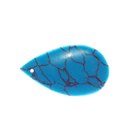
Some looks, like a cotton blazer and jeans, are just too good to go out of fashion. Year after year, designers and stylists find new ways to make blazers and jackets look new and daring, and every season, consumers flock to the nearest department store in a desperate attempt to keep up. Not you! As long as you're dying from a lighter color to a darker color you, can transform last year's dull cotton blazer into this year's trail blazer with easy to use fabric dye.
Step 1
Line your kitchen countertops and floor with newspapers or plastic to guard against spills and wear rubber gloves for the duration of the project.
Step 2
Fill a large metal cooking pot with 3 gallons of tap water and heat it on the stove to a low simmer.
Step 3
Stir in 1 tablespoon of mild laundry detergent and transfer the water to the sink. The detergent will help ensure the color gets evenly distributed.
Step 4
MIx 2 cups of hot water with one-half bottle of liquid dye or one package of powdered dye in a bowl or disposable container.
Step 5
Stir the mixture until the dye is well-blended, add it to the sink water. This creates the dye bath.
Step 6
Stir the solution for 2 to 3 minutes or until the water takes on the dye's color. Use a long stirring utensil such as metal cooking spoon to ensure that the solution mixes at the bottom.
Step 7
Rinse the blazer in fresh warm water to open up the fibers and help them to absorb the pigment. Make sure that the blazer is wet throughout the entirety of the material.
Step 8
Squeeze out the excess water so that it is only damp, but not dripping, and transfer it to the dye bath.
Step 9
Stir the blazer continuously for 5 minutes, then add 1 cup of salt to the solution to help the material better absorb the color. Resume stirring for an additional 20 to 30 minutes.
Step 10
Let the blazer soak in the bath for up to 1 hour to get darker shades, or take it out after 30 minutes for lighter shades. Keep in mind that, like all wet fabrics, the material will dry into a lighter shade than it appears to be when it's wet.
Step 11
Drain the sink and rinse the blazer with large amounts of fresh warm water -- the excess dye will bleed from the garment for several minutes, but the fabric will retain the new color.
Step 12
Cool the water's temperature as the dye bleeding slows down and lightens, but only stop rinsing when the water runs clear.
Step 13
Wash the blazer in the washing machine alone, on warm and with a mild laundry detergent. Remember to adjust the rinse cycle to cool to help set the color.
Step 14
Dry the blazer in the dryer or let it air dry. Use chlorine bleach to clean the workspace and sink.
Related Articles

How to Dye a Swimsuit

How to Get Tie-Dye Colors to Stay Bright

How to Dye Faded Clothes

How to Dye Tulle

How to Change the Color of a T-Shirt

How to Bleach Khakis White

How to Dye Faded Black Dress Pants

How to Dye Cotton Pants

How to Dye Pantyhose

How to Take Care of 100% Cotton ...

How Do I Use Rit Dye to Make Turquoise ...

How to Dye a Linen Dress

How to Redye a Shoe

How to Fix Colors That Bleed on a ...

How to Dye a Nylon & Spandex Swimsuit

How to Dye Suede Shoes

How to Dye Red Clothes White

How to Dye Fabric Black

How to Bleach Mens' Dress Shirts

How to Dye a T-Shirt Using Beets
References
Tips
- Cover the blazer buttons with high-temperature, water-resistant masking tape to protect them from being dyed.
- Read the garment care tag on the blazer to determine if it is machine washable and safe for hot water.
Warnings
- Think twice before attempting to dye a darker color a much lighter color. Bleaching may be necessary which can have an unpredictable impact on the existing color, and thereby the finished product.
- Never leave a hot stove unattended.
- Use caution when handling bleach, which is a corrosive agent.
Writer Bio
Chance Henson earned a B.A. in English literature and a writing minor from Lamar University. While interning at the "University Press" newspaper and "UP Beat" magazine he received an award for news feature writing from the Texas Intercollegiate Press Association. Henson went on to serve as content editor for "CUSH Magazine," eventually leaving to pursue the development of an online secular humanist educational publication.
Photo Credits
Ciaran Griffin/Stockbyte/Getty Images